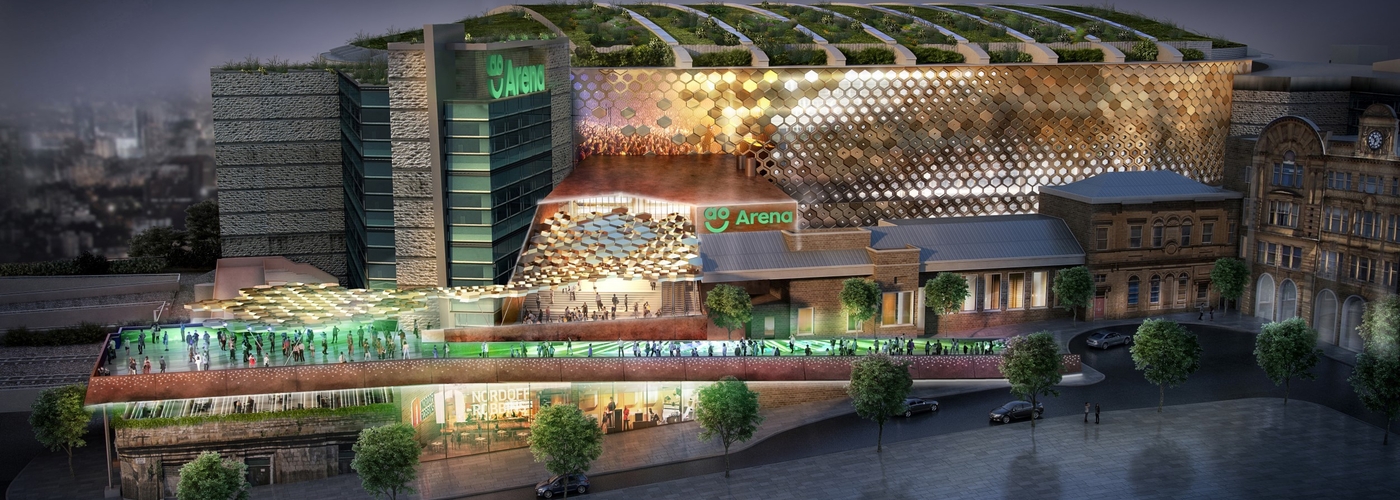Arena changes name, Thomas Street row, goodbye Rochdale greenbelt, Piccadilly horror
Despite the big bad coronavirus there is plenty of development taking place. Huge changes are planned in housing that might change the way Greater Manchester looks forever. Then there are smaller schemes too and, what a surprise, something that might add to the design mess that is the Piccadilly Gardens.
Change of name as Manchester Arena says AO to the AO Arena
For the first time since 2014, Manchester Arena is to be renamed following a sponsorship deal. It will now be called the AO Arena. AO is a huge Bolton-based online electricals retailer. The deal comes as the the arena enters a timely and very necessary redevelopment due to the threat of the proposed East Manchester arena close to the Etihad Stadium. AO boss and founder John Roberts said: “Our home is firmly in the North West, something we’ve never forgotten while building the business into a global destination for electricals.” James Allen, general manager of the AO Arena for ASM commented on the news: “We are thrilled to have secured this partnership and we look forward to a dynamic relationship with this exciting brand.”
The AO Arena will reopen in 2021. The redevelopment work will include an enhanced arrival experience, new concourses, a dedicated centre for music therapy charity Nordoff Robbins and increased capacity to 24,000 making it the largest indoor arena in Europe. The image above shows how it may look. The tired building is desperate for a revamp so this is good news to regular gig-goers. If we had a wishlist we'd also say please get some proper beer in and some decent food. Burgers, hotdogs and crap lager are so 1990s. People paying big ticket prices deserve better than the slop that was served pre-lockdown.
(Following news of the sponsorship deal at the now renamed AO Arena, rumours that the Bolton Arena in AO’s home town is going to be renamed the Ey Up Arena sponsored by Holland's Pies have proven unfounded).
Thirty-year Piccadilly Gardens hole to be filled
It’s been a blight in the Piccadilly area for decades, but now the derelict site at the corner of Lever Street and Piccadilly is to be developed.
Harrogate-based Trafalgar Leisure have stepped in with a ten-storey suggestion that would have ground floor shops, a restaurant, bar or leisure units on the first floor and offices in the upper floors with a boardroom and rooftop terrace.
Trafalgar Leisure have said their scheme represents ‘a unique opportunity to create a development that reflects the site’s prominence.’ Unique is an over-used word but certainly the dodgy building the developer has depicted in their application would be uniquely ugly even by Piccadilly standards.
Heaven forfend the finished article will resemble anything like this dreadful lump. It makes a derelict site worse. The scheme will also ‘integrate’ the three-storey mid-18th century building next door, the last remnant of the first building period here as Manchester expanded.
It's good news the old building will be saved although it will look a bit David and Goliath with that ten-storey structure tacked on.
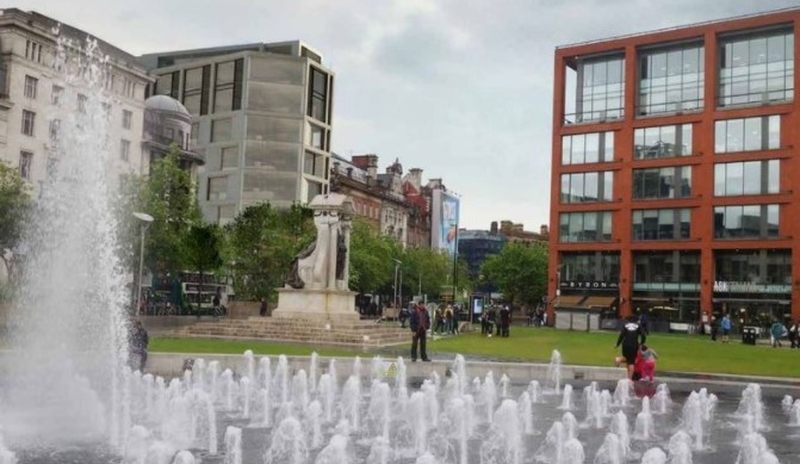
Thomas Street demolition refused
Speaking of historic structures, three Grade II weavers’ cottages in the Northern Quarter on Thomas Street have been saved from demolition. The city planning committee voted unanimously to throw out Real Estate Investment Partnership’s (REIC) option of demolition to pave the way for apartments called Warp & Weft. Confidential generally supports the retention of older buildings in the city which provide Manchester with both context and character, as with the Jolly Angler pub close to Piccadilly Station. We’re more equivocal about this decision.
On the Thomas Street side the facades of the cottages, next to the ruined site at the junction with Kelvin Street, are certainly not original, the windows and the brick are all wrong for 200-plus-year-old Manchester weavers’ cottages. Maybe they have some internal bits and pieces or layouts that merit retention.
At the same time the proposed replacement design, five storeys and 20 units, by John Matthews Architects (JMA) was sharp, respectful and handsome, and kept the warehouse to the rear at the Kelvin Street/Back Thomas Street junction.
Then again almost as valuable as the Thomas Street cottages in terms of context are the wonderfully original WW2 bomb shelters in their basement. The debate here highlights the complexity of demolition and new build in the precious historic core of a city.
Let’s hope fervently that the current brick heap of an eyesore at the junction of Thomas Street/ Kelvin Street doesn’t lie fallow for too long. Maybe Trafalgar Leisure, from the story above this one, can snaffle the design and use it on their site rather than that grey shocker in Piccadilly.
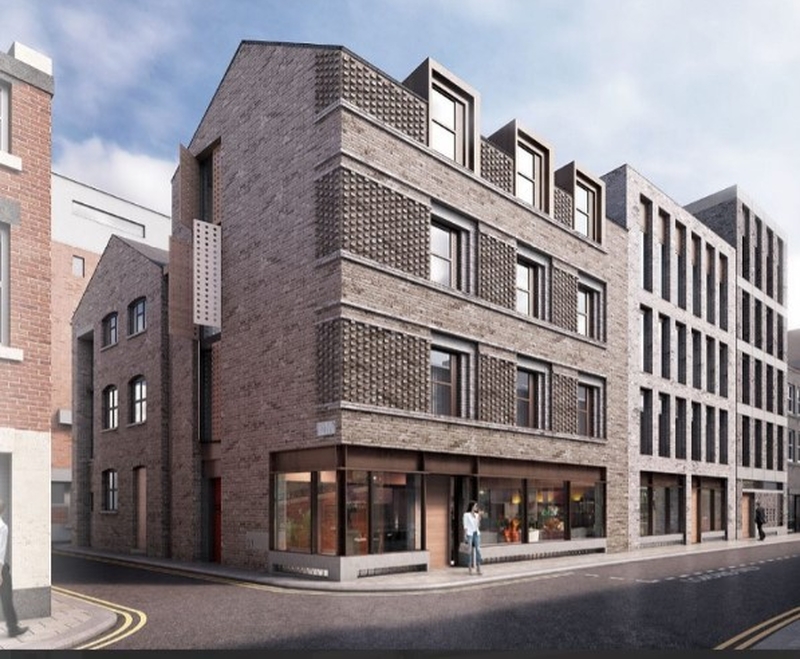
Objectivity not ideology please
Two of the councillors that opposed the Thomas Street scheme were the Piccadilly Ward councillors Sam Wheeler and Jon-Connor Lyons. They thought the demolition would be a Northern Quarter disaster which is debatable, there are points in favour of retention but also of giving the site dynamism with a careful and considered design such as the one proposed.
Cllr Sam Wheeler also stated the demolition was ‘not tolerable,’ which is excessive. Let’s hope playing politics wasn’t the motivating factor here at a time when a vocal number of people in the city and region armed with the anger of social media seem to oppose development on ideological lines rather than on any objective basis.
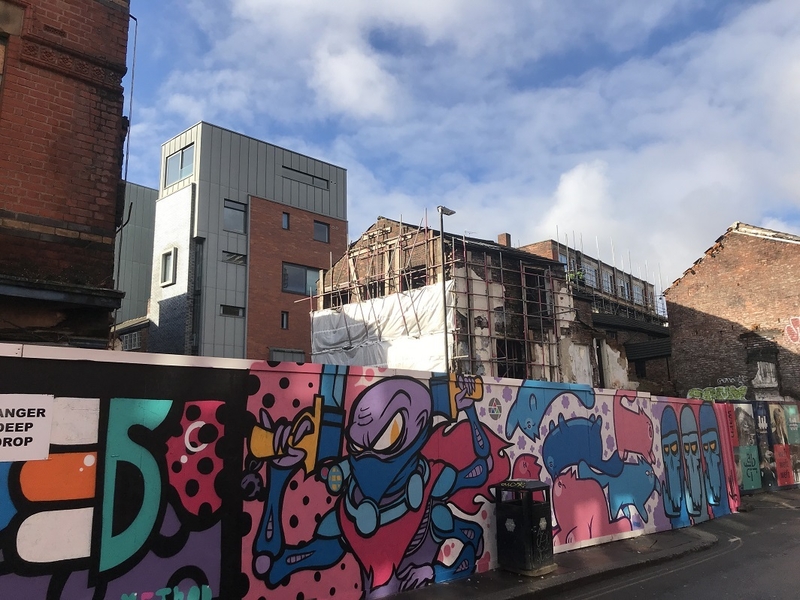
Q. What's the mutter? A. It's a Thomas St weaver’s house for sale
Meanwhile further west on Thomas Street there is a cracking example of a weaver’s house available for purchase, in all its three-storey glory. 33 Thomas Street hosts Alfred E Mutter’s jewellers and pawn shop. The latter has a history spanning 116 years. The family history of the Mutters is a very Manchester story and begins with the arrival of the first Mutter as a refugee from the Austro-Hungarian Empire. The building has a history spanning 230 years and goes to the heart of Manchester's one-time textile ascendancy. Times change though and now the four-bedroom building is in a prime development area. It can be yours for £600,000. Hunters, who are marketing the property, suggest it could be split into apartments. Surely it would be better, as is happening on Liverpool Road, if this splendid intact weaver’s cottage were turned into a single townhouse.
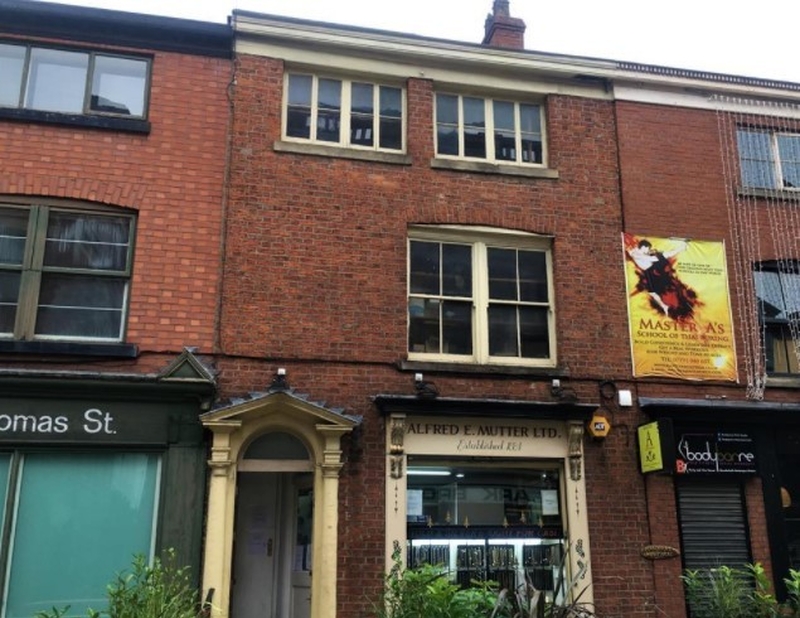
Rochdale greenbelt - be scared, be very scared
A reader has passed on this fascinating piece about the Government’s new house-building proposals and rosters. Put politics aside for a moment if you’re of a different political outlook and have a gander anyway. It’s from Conservative MP Neil O’Brien and is objective and fair. Here are a couple of paragraphs.
‘The core cities of Manchester (-37 per cent) and Liverpool (-26 per cent) see huge (house-building) falls, while the areas around them shoot up. In Greater Manchester, for example, the growth is shifted to the blue suburbs and shires. Outer parts go up: Wigan up 10 per cent, Bury up 12 per cent, and Rochdale up 97 per cent.’
‘But it isn’t just that the numbers in the new formula are lower than the old formula for urban areas. In many cases the new formula suggests a lower number than their recent rate of delivery. This is true of Sheffield (12 per cent below actual delivery), Leeds (16 per cent), Bradford (23 per cent), the entire North East (28 per cent), Nottingham (30 per cent), Manchester, (31 per cent), Leicester, (32 per cent) and Liverpool (59 per cent). The new formula seems to assume we are going to level down our cities, not level up.’
‘But if we go with this algorithm unamended, outside London most Conservative MPs will be seeing large increases in the housing targets for their constituencies, while many Labour MPs see their local targets reduced. Is this what we want?...I think not. Compared to the rest of Europe, the UK has much less dense cities.’
O’Brien is right, we should be giving our cities much denser populations, exploiting the acres and acres of brownfield sites. Cities are about people after all.
At the same time we must improve the public green space we have to make denser living in cities more attractive. Building on greenbelt surely is the wrong path to choose in 2020.
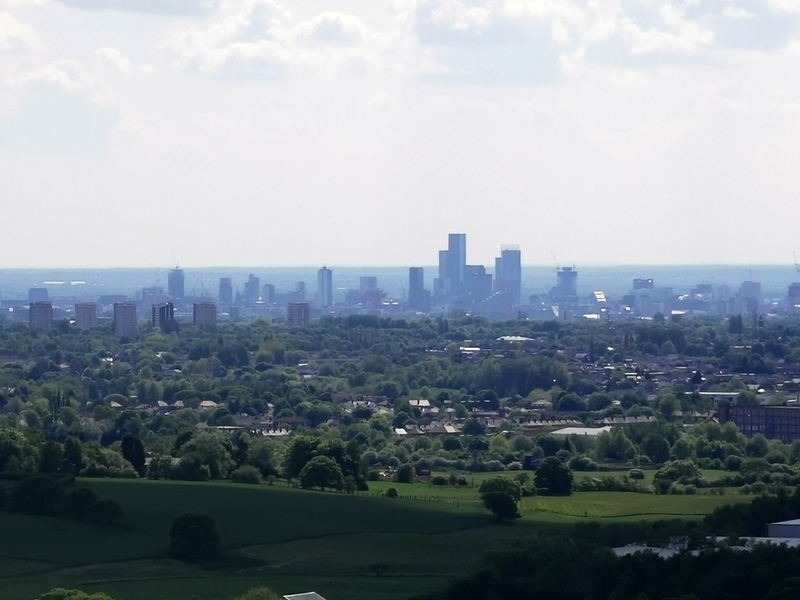
Imagining Manchester’s skyline – again
Trafford Park based Alliance Investments have imagined what the city skyline will look like in 2030. This is the latest of many such leaps into the dark unknowable future but credit where credit is due, Alliance’s fine work here reaches back in time too. The video, with its sketchbook aesthetic, looks at how the skyline has grown from 1960 and then travels though time to look at how it might be in 2030. It’s very entertaining. Give it a go, the website info about the buildings is decent as well.
Watch Manchester Grow from MadeByShape on Vimeo.





